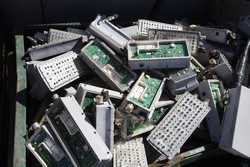New technology to boost rare earths’ recycling
Rare earths or rare earth elements (REEs) are a group of 17 chemically similar metallic elements that are used extensively in everyday life. They are found in mobile phones, hard drives, hybrid cars and other products in high demand. Production of REEs is now concentrated in only a few countries and Europe has no production facilities, therefore supply and cost volatility present a possible risk to industrial output. Europe has some potentially exploitable natural resources of rare earths. Still, recycling of scarce materials like neodymium from end-of-life products is a strategic necessity. Given the importance of REEs to modern living, the EU is funding research to make recycling a more feasible option. The goal of the EU-funded project REMANENCE(opens in new window) (Rare earth magnet recovery for environmental and resource protection) was to dramatically increase the amount of rare earths recovered from existing waste streams by recovering and recycling neodymium-iron-boron (NdFeB) magnets. Advanced sensing and mechanical separation techniques were developed to recover these rare earth magnets from electrical and electronic equipment. The use of hydrogen was explored as a processing agent to decrepitate NdFeB magnets into a hydrogenated powder. This powder was extracted mechanically from obsolete devices and processed further using advanced sieving processes. Researchers produced magnets with comparable magnetic characteristics to new magnets made from fresh material, using the recycled powder in the existing manufacturing process. Researchers also estimated the energy and environmental impact of producing rare earth neodymium for magnets by comparing recycled end-of-life products with mining the same amount of virgin material. In the cases considered it was found that recycling used significantly less energy than mining. REMANENCE therefore developed a cost-efficient process for the recovery of NdFeB magnets from waste streams before this valuable material is lost to landfill. This will give the EU a secondary source of rare earths and support the growth of the bonded magnet industry in Europe.







